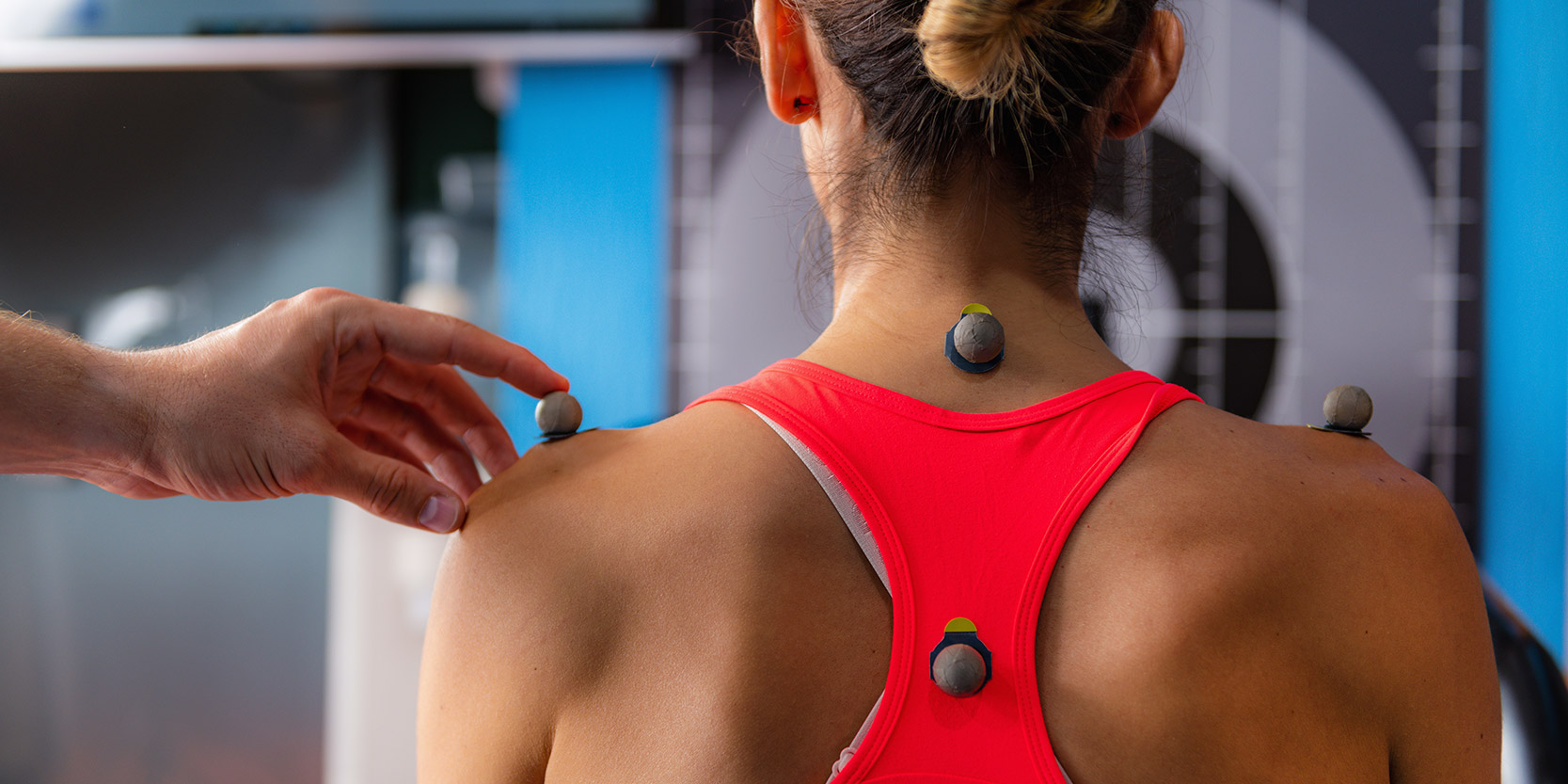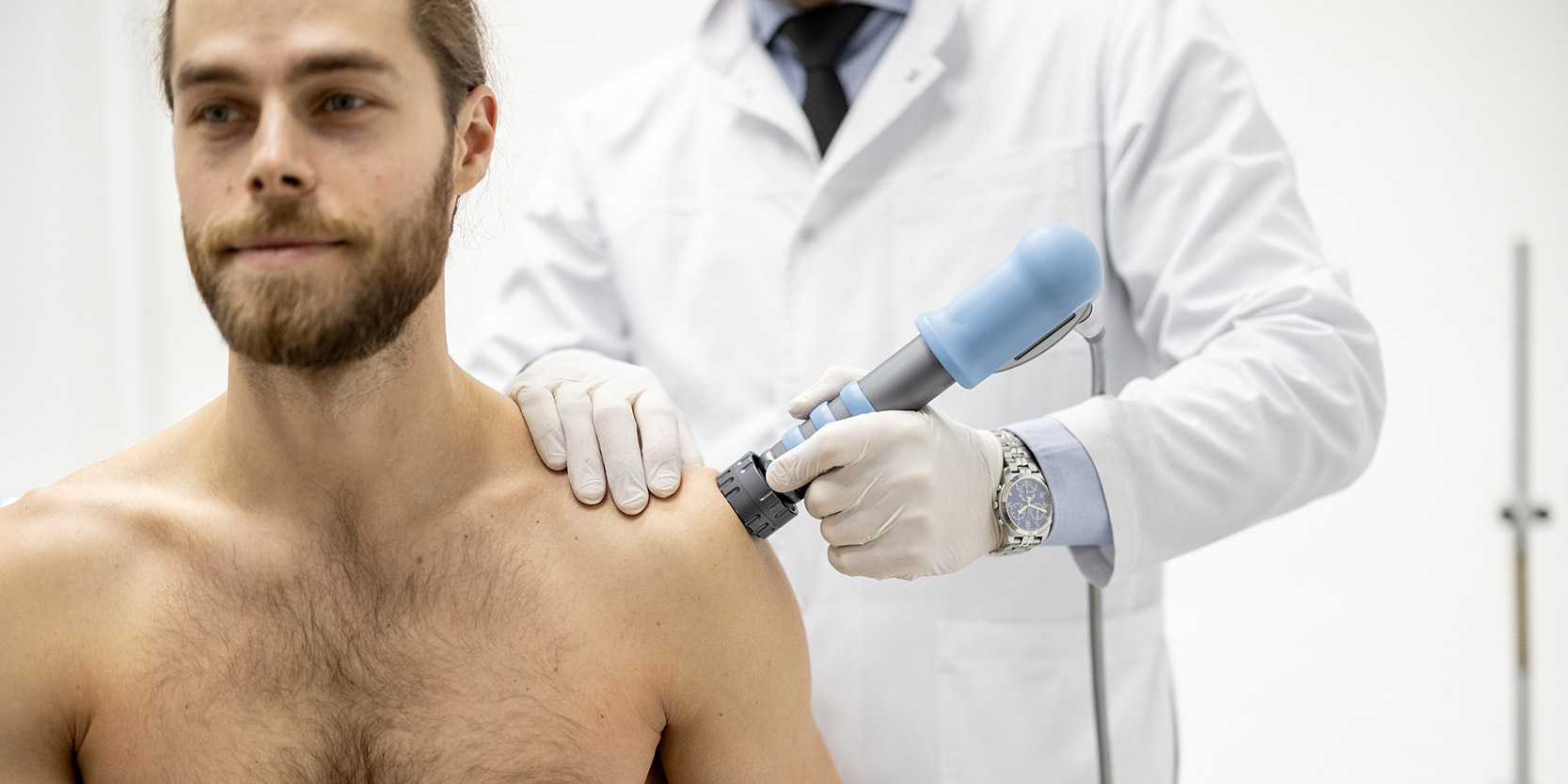Shoulder impingement is thought to be the underlying cause of up to 65 percent of shoulder pain complaints. This painful condition sometimes goes away on its own, but often results in weeks of pain and limited movement that requires treatment with specialized exercises. If you or a loved one is suffering from ongoing pain, learn more about this condition and how a sports chiropractor can help.
What is shoulder impingement?

The shoulder is a complex joint with several different parts working together to deliver the wide range of motion most people take for granted. One of the central structures in this joint is a set of four muscles that wrap around and connect to a “cuff” of tendon called the rotator cuff. This tendon helps to hold the muscles in place.
However, the rotator cuff tendon also sits between two bones: The acromion and the humerus. If the tendon experiences injury or irritation, it may swell. Alternatively, bone spurs may push against the tendon. In either case, the rotator cuff may begin to catch on the humerus or acromion when the shoulder is used.
As the tendon catches over and over, it can become increasingly irritated and swollen, leading to a worsening of the impingement and the painful symptoms that accompany it. This condition occurs most frequently among athletes who engage in repetitive overhead motions (e.g. Tennis, volleyball, baseball or swimming).
What causes shoulder impingement?

Impingement occurs when the tendon catches on the structures of the shoulder. There are several reasons that the tendon may catch instead of moving seamlessly as the shoulder is used. Here are a few of them:
- Tearing or injury due to a fall
- Irritation and swelling due to overuse
- Inflammation of the bursa, which sits between the rotator cuff and the acromion, most often due to overuse
- Bone spurs develop on the acromion
- A misshaped acromion (Usually present at birth)
What are the symptoms of shoulder impingement?

When the rotator cuff becomes trapped within the shoulder, many symptoms can arise. The most prominent and common of these is pain. Here is a look at the type of discomfort that accompanies this condition:
- Pain in the top and outside of the shoulder
- Achiness at night
- Pain that worsens when you lift your arm
- Pain when reaching behind your back
- Shoulder weakness
- Pain radiating from the top to the side of the shoulder
- Limited range of motion
If you experience these symptoms to the point that they interfere with your daily activities and sports, or if your pain lasts for more than a few weeks, you should consult with a medical professional, like a chiropractor or physical therapist, to receive treatment for your condition.
How can chiropractic care help treat shoulder impingement?

One of the most effective ways of addressing shoulder impingement is chiropractic treatment. This approach pinpoints the cause of the problem and uses a number of techniques to ease the inflammation and swelling that cause the symptoms of this problem. As a result, it can help you to more quickly get back to achieving your physical activity goals and help you spend less time seeking treatment. Here is a look at some of the ways in which chiropractic care can support healing from shoulder impingement.
Shoulder Exercises
Certain specialized exercises can improve your posture, strengthen your muscles and reduce the pain associated with your shoulder impingement. Your physiotherapist or chiropractor can teach you how to do these exercises in your sessions at the office, but you can often continue these at home once you know how to do them correctly. They may include both stretching and strengthening exercises in order to improve your range of motion and your strength.
Chiropractic Adjustments
Chiropractic adjustments can sometimes alleviate the pain of shoulder impingements. This approach corrects misalignments in the spine and joints. The correct approach can help address problems that are limiting the movement of your tendon and exacerbating the chances of it getting trapped as you move your arm.
Soft Tissue Therapy
Soft tissue therapy, including instrument-assisted soft-tissue mobilization, manipulates the skin, tendons and muscles to alleviate dysfunction. Your physiotherapist can use ergonomically-designed instruments to deeply manipulate the specific area of concern in order to improve the symptoms of your impingement.
If you want to address your shoulder pain more quickly and effectively, seek chiropractic care through Dr. Roy Nissim. We can customize our approach to your treatment to ensure that you spend as little time in our clinic as possible and as much time as possible crushing your goals. We can also address other issues, such as knee pain. Contact us today to learn more about how we can support your healing.





